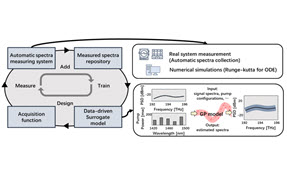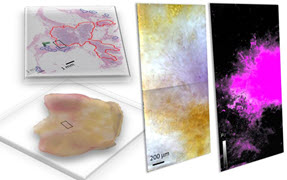New synthetic approach produces monodisperse palladium nanoparticles
Nanoscale metallic nanoparticles in the 1–4nm size regime are of great interest due to their electronic, catalytic, and, in some cases, optical properties. For example, within this size range, electronic properties transition from a bulk-like continuum of electronic states to molecule-like, discrete electronic orbital levels.1 Gold and silver nanoscale particles have been studied more than other metals largely due to their ability to absorb and scatter light in the visible region of the electromagnetic spectrum. They are also more stable toward oxidation as compared with other metals. Only a few reports demonstrate the voltammetry or electrochemical properties of other metal nanoparticles in the 1–4nm size regime.2 Our group has developed synthetic strategies that produce monodisperse metal nanoparticles with diameters less than 4nm. We have also studied the charge transfer properties of these nanoparticles.
Gram-scale production of well-defined, monodisperse 1–4nm metal particles is a major challenge. We have been particularly successful with palladium (Pd) nanoparticles, which we have intensively pursued since Pd is often used as a catalyst in organic transformations. Examples include carbon-carbon coupling reactions and olefin hydrogenation reactions. The high surface-to-volume ratio and increase in surface atom distribution of the nanoparticles greatly enhance the metal's catalytic activity.

Several procedures that produce Pd nanoparticles have been reported, but only a few of these yield monodisperse nanoparticles in the 1–4nm size regime. Typical stabilizing ligands for Pd nanoparticles include dendrimers3 and thiols.4,5 Our method makes use of thioethers with dual functions as both stabilizing and reducing agents. Figure 1 shows Pd nanoparticles of 1.7±0.2 and 3.5±0.1nm that were synthesized with n-dodecyl sulfide using our new approach.6 Variations in thioether structure, reaction temperature and time, solvent, and reactant concentrations led to particle size control. Transmission electron microscopy with energy dispersive X-ray spectroscopy (EDS), X-ray diffraction, and, in some cases, electrochemical measurements confirmed particle sizes and compositions.

Our synthesis provided easy access to gram-scale quantities of monodisperse Pd nanoparticles. As such, we were able to explore their charge-transfer properties, which have received scant attention in the literature. Recently, reports have shown that when gold nanoparticles come in contact with a semiconductor nanoparticle, charge equilibration between the metal and the semiconductor occurs, and the metal accepts electrons from the semiconductor.7 We wanted to determine how this property translates to other metals and if size has any effect. Thus, we titrated 1.7±0.2, 1.9±0.1, and 3.5±0.1nm Pd nanoparticles to trapped TiO2 conduction band electrons TiO2(e-)]. The results showed that an increase in Pd nanoparticle concentration resulted in a decrease in TiO2(e-) concentration, as shown in Figure 2. Furthermore, the data indicated that the TiO2(e-) discharged more readily with increasing Pd nanoparticle size. These results agree with studies conducted with gold nanoparticles in that smaller particles mean smaller capacitance, and thus fewer electrons are required to equilibrate with the charged semiconductor.
Synthetic approaches that provide ease and flexibility in preparing monodisperse metal and bimetallic nanoparticles will allow us to further our chemical and physical understanding of the size effects of nanoparticles. Such studies are paramount in developing advanced materials for electronic devices and catalysts.
Sherine O. Obare obtained her bachelor of science degree in 1998 from West Virginia State University, where she performed undergraduate research in physical chemistry with Sundar Naga. In 2002 she obtained a PhD in organic/inorganic chemistry from the University of South Carolina under the direction of Catherine J. Murphy. She was a Dreyfus postdoctoral fellow from 2002 to 2004 in the laboratory of Gerald J. Meyer. Since 2004, she has been on the faculty at Western Michigan University.



